
Further case studies
Carrying capacity
Build up strength in the hindquarters, back muscles and trunk lifting muscles to counteract carrying fatigue.
Mare TEnNessee
Breed: Noriker
Age at start of training: 15 years
Customer: Owner Ramona Moschinger
Lesson interval and adjustment of the training plan: every 12 weeks

Before
Inharmonious back line with sunken rump
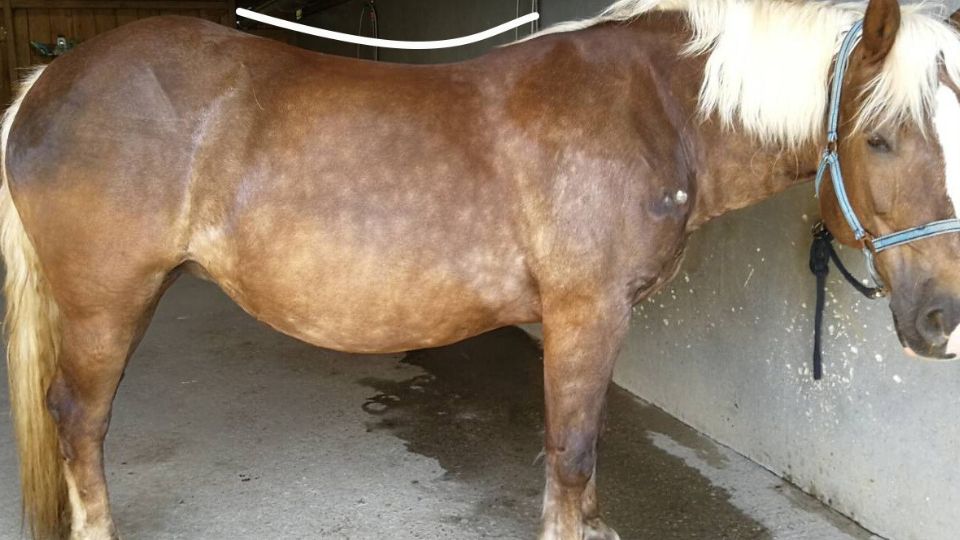
After Equisensomotoric® training
Harmonious back line with raised torso
gelding Blueberry
Breed: Polish Warmblood
Age at start of training: 17 years
Previous history: COPD, shivering (has not changed as a result of Equisensomotoric® training), underweight, lack of muscles, frequent stumbling
Customer: Owner Michaela Hofbauer
Lesson interval and adjustment of the training plan: every 6-8 weeks
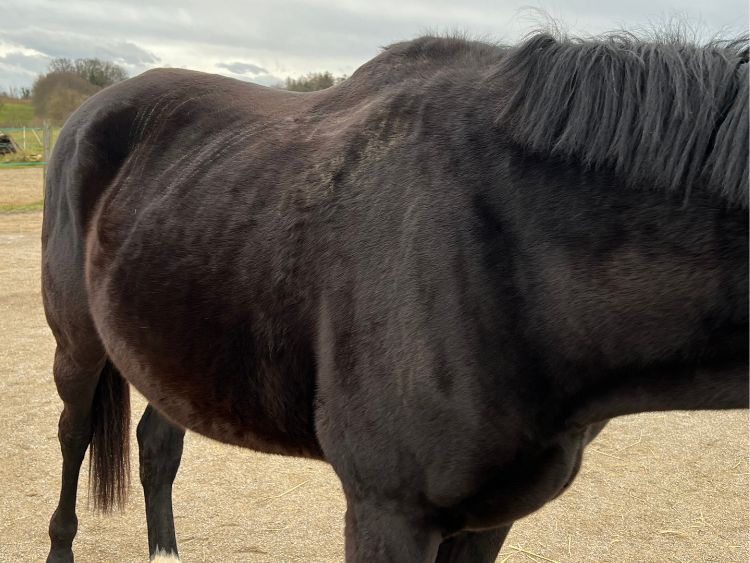
Before
The exhausted, underweight gelding shortly after the new owner took over.
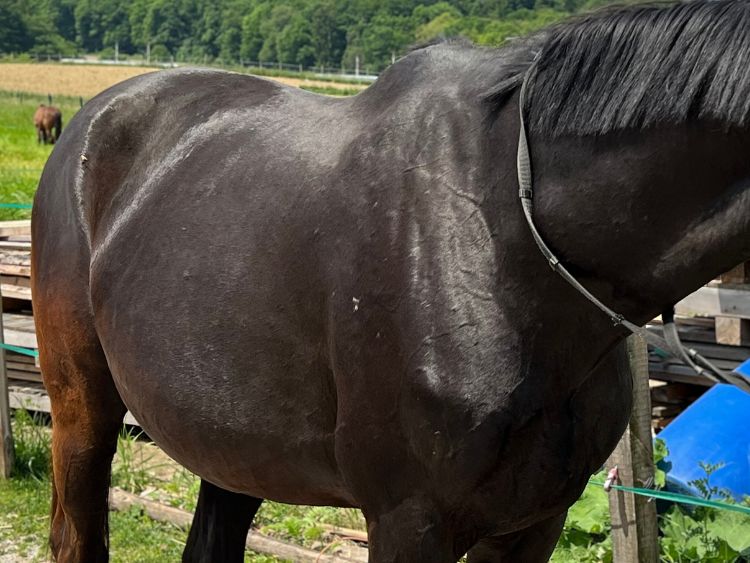
After Equisensomotoric® training
Through regular training and feeding optimization according to the training plan as well as regular manual therapies, the new owner helped her horse to a significantly improved general condition within a year.
Stallion Destino
Breed: Mangalarga Marchador (Brazilian gaited horse breed)
Age at start of training: 7 years
History: The stallion was purchased at the age of 5 and showed a tense back with a low torso.
Other health problems were a stomach ulcer at the stomach outlet, hypermobility, lack of muscles despite 24-hour hay, an axe blow, unstable knee joints on both sides and difficulties walking downhill.
The horse was broken in at the age of 6.
Owner: Johanna Thanheiser (author of Equisensomotoric® Training)
Play the video by clicking on the image ↑
Before
Due to muscular weakness, the stallion had problems with both knees, mainly on the left hindleg.
Earlier attempts at training, such as trotting uphill, frequent cantering and side gait, visibly and audibly worsened the symptoms (a slipping sound caused by loose knee ligaments).
Play the video by clicking on the image ↑
After Equisensomotoric® training
The horse has a solid muscular foundation and trots evenly in self-carriage.
The trunk jacks are active, which means that the forehand moves in a shock-absorbing and springy manner.
Regular training keeps the stifle joints stable and no more noises are audible.

Before
Shortly after the purchase, the stallion was in a poor condition with a sunken rump, a tense topline and a clear axe cut with a protruding lower neck.
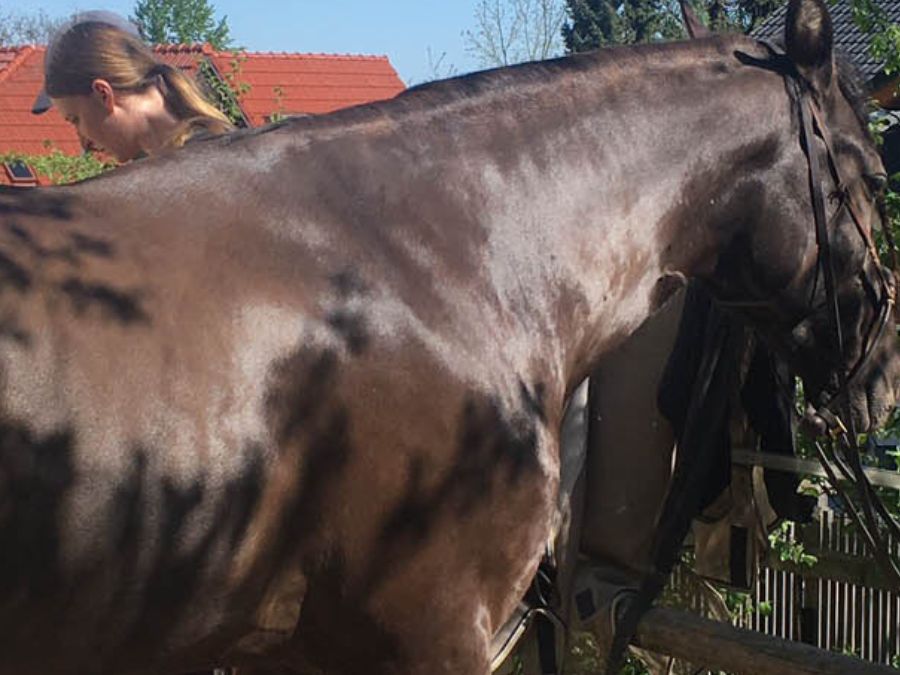
After Equisensomotoric® training
Correct training lifted the rump, the topline became strong and the horse developed a beautiful neck.
To reduce stress, the stallion was castrated at the age of 8 (this photo shows the horse two years after castration).

Before
Hypermobility, lack of croup and thigh muscles and consequently loose knee ligaments.
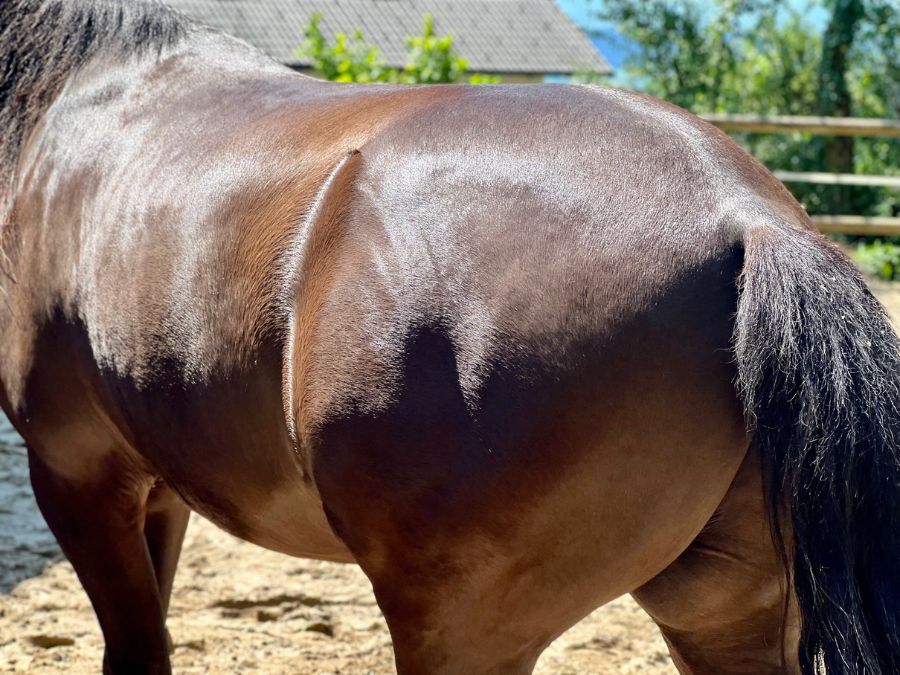
After Equisensomotoric® training
Strong topline, muscular croup and stabilized stifles.
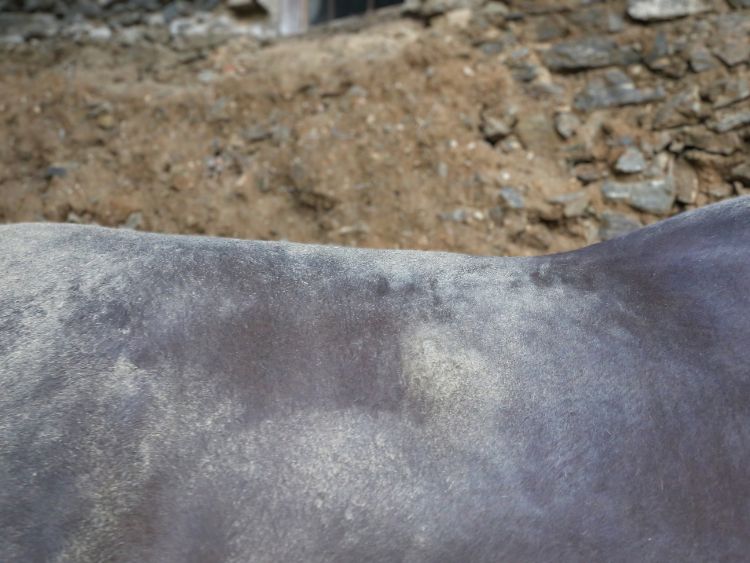
Before
Excessively flattened, tense back line with a tendency to carp back
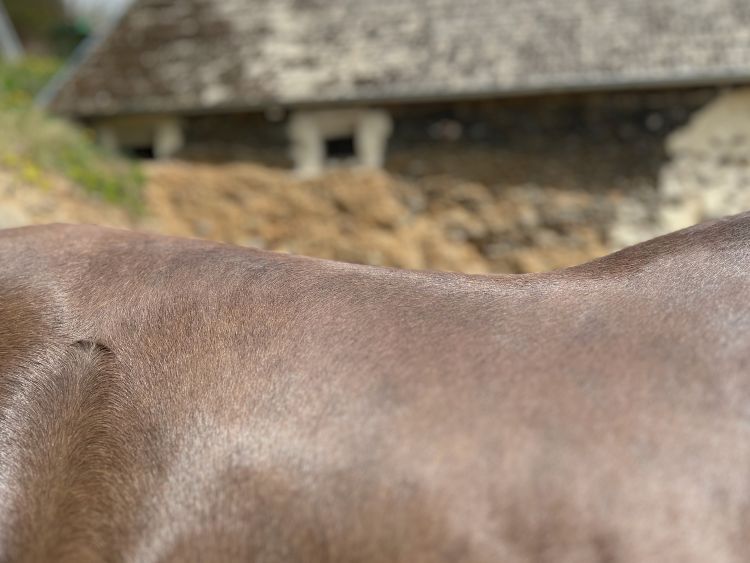
After Equisensomotoric® training
Harmonious course of the back line

Before
Insufficiently muscled horse
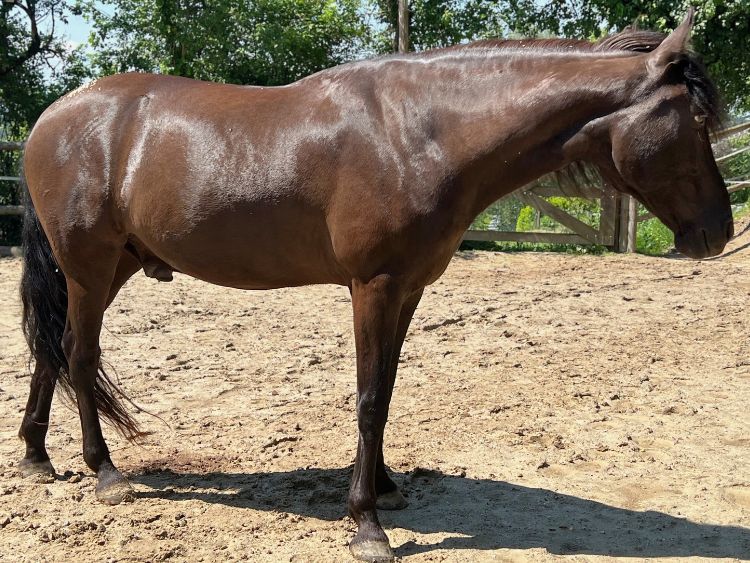
After Equisensomotoric® training
Well-muscled horse, especially in the area at the transition from the shoulder girdle to the neck (base of the neck) you can see the gain in musculature here.
Gelding serido
Breed: Mangalarga Marchador (Brazilian gaited horse breed)
Age at start of training: 15 years
Previous history: twitching foot at the rear left due to nerve injury (this remained unchanged by the Equisensomotoric training), tear in the superficial flexor tendon at the front left (healed), main problem for many years was muscle development: despite daily riding/ground work and 24-hour hay and concentrated feed, the horse simply did not build up muscle.
Owner: Johanna Thanheiser (author of Equisensomotoric® Training)
Play the video by clicking on the image ↑
Before
Here the horse is 15 years old and visibly tired at this time.
Play the video by clicking on the image ↑
After Equisensomotoric® training
Here the horse is 20 years old.
It is strong, motivated and self-confident.
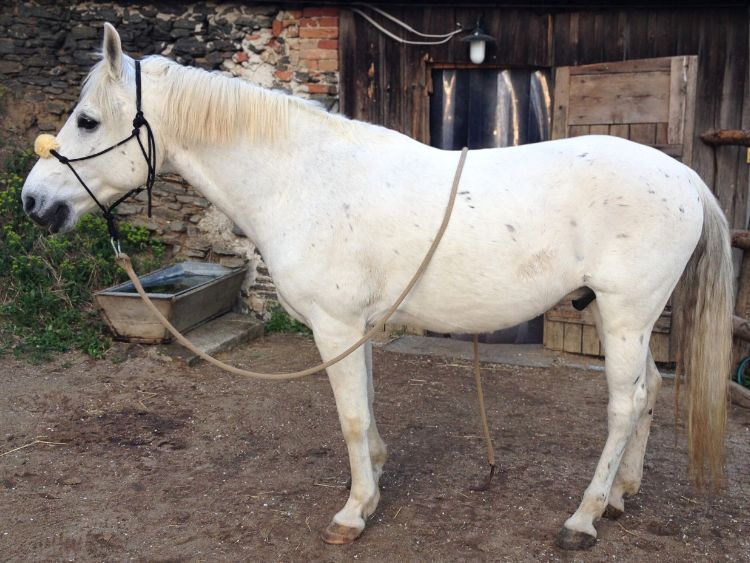
Before
15 years old
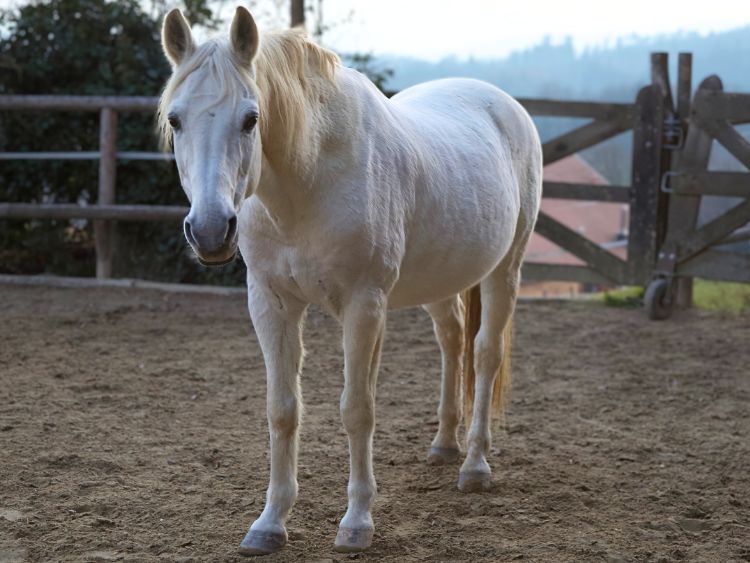
After Equisensomotoric® training
22 years old

